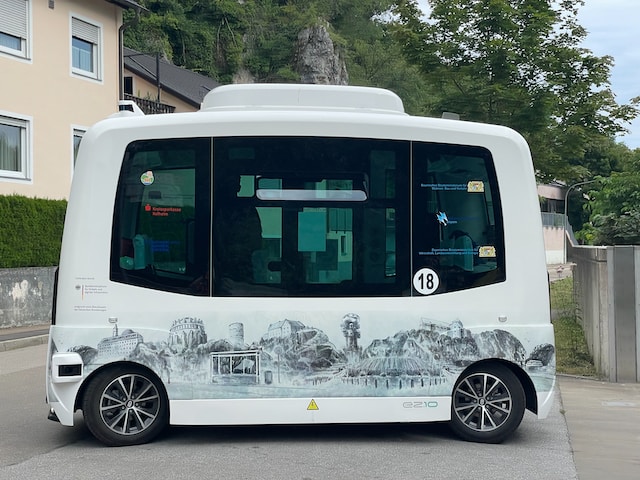Picture yourself sitting in your car, with your hands off the wheel and your feet off the pedals. Sounds like something out of a science-fiction movie, right? Well, we’re here to tell you that this scenario might not be too far off. Autonomous vehicles are no longer just a figment of our imagination; they’re becoming a reality. In fact, they’re already being tested on roads around the world. So what does this mean for America’s roads? In this blog post, we’ll explore how autonomous vehicles will revolutionize transportation as we know it and why you should be excited about their future impact on our daily lives.
The History of Autonomous Vehicles
Autonomous vehicles have been a topic of interest for many decades, with the first attempts at creating self-driving cars dating back to the 1920s. In fact, in 1925, a radio-controlled car was demonstrated in New York City, which paved the way for further advancements.
Throughout the years, various automakers and tech companies have attempted to create autonomous vehicles but were faced with numerous challenges such as technological limitations and safety concerns. It wasn’t until the early 2000s that significant progress was made when DARPA (The Defense Advanced Research Projects Agency) launched its Grand Challenge competition.
In this event, teams from around the world competed to develop fully autonomous vehicles capable of navigating through challenging terrain. Although none of them completed it successfully on their first try, it spurred immense research into autonomous technology.
Fast forward to today’s era; Google is perhaps one of the most well-known names associated with autonomous driving thanks to its Waymo division. They’ve been testing their self-driving cars since 2009 and are now considered one of the leaders in this emerging industry.
As we move forward into an increasingly automated future driven by AI technologies such as Machine Learning and Neural Networks – there is no doubt that we will see more advances made towards achieving truly driverless roads across America.
The Advantages of Autonomous Vehicles
Autonomous vehicles have been one of the most talked-about technological advancements in recent years. The idea of cars driving themselves without any human intervention seemed like something out of a science fiction movie just a few decades ago, but it is now becoming a reality.
One significant advantage of autonomous vehicles is safety. With humans behind the wheel, there is always room for error, which can lead to accidents and fatalities. However, self-driving cars are equipped with advanced sensors and software that can detect obstacles and make decisions faster than human drivers.
Another benefit is increased efficiency on the roads. Self-driving cars can communicate with each other through vehicle-to-vehicle communication systems (V2V) to avoid traffic congestion and choose more efficient routes. This would reduce travel time considerably while also decreasing fuel consumption.
Autonomous vehicles could also provide mobility solutions for people who cannot drive due to physical disabilities or age-related issues. These individuals would no longer have to rely on public transportation or expensive ride-sharing services as they could easily access an autonomous car whenever they need it.
Self-driving cars could significantly reduce the cost associated with car ownership by eliminating the need for parking spaces in urban areas where space comes at a premium. Autonomous taxis will be able to park remotely outside city centers awaiting further instructions from their passengers’ smartphones when required.
Autonomous vehicles have numerous advantages that will undoubtedly change how we live our lives and move around cities in the future!
The Disadvantages of Autonomous Vehicles
Autonomous vehicles have been the buzzword for a while now, with people thinking about how great it would be to sit back and relax while their car drives them around. However, there are some disadvantages that come along with this technology.
One of the biggest concerns is safety. While autonomous cars aim to reduce accidents caused by human error, they are still susceptible to technical failure or hacking, which can lead to disastrous consequences. In addition, there may be situations where an autonomous vehicle does not recognize an obstacle or pedestrian due to poor weather conditions or unexpected scenarios.
Another disadvantage is cost. The technology required for autonomous vehicles is expensive and may not yet be affordable for most consumers or even public transport services. This could create a divide between those who can afford such cars and those who cannot.
Moreover, there is also concern over job loss in industries such as transportation and delivery services as these jobs become automated, leading to potential unemployment rates rising in certain sectors.
Privacy concerns have also arisen surrounding autonomous vehicles as they collect data on driver behavior and location information which could potentially fall into the wrong hands if cyber security measures fail.
While these drawbacks do exist, it’s important to remember that technological advancements often come with pros and cons – only time will tell whether the benefits outweigh any negative impacts of this new era of automotive technology.
How Autonomous Vehicles Will Revolutionize America’s Roads
Autonomous vehicles have the potential to revolutionize how we travel on America’s roads. Firstly, with autonomous driving technology, human error can be eliminated, reducing accidents and fatalities. This could lead to safer roads for everyone.
Additionally, autonomous vehicles can improve traffic flow by communicating with each other and making real-time decisions based on current road conditions. This means less time spent stuck in traffic and more efficient use of our roads.
Furthermore, self-driving cars could also reduce carbon emissions as they are likely to be electric or hybrid vehicles. This would help combat climate change and create a cleaner environment for future generations.
The convenience factor cannot be overlooked either – imagine being able to read or work while your car drives you to your destination! Autonomous vehicles could make commuting much more productive and enjoyable.
Self-driving cars could potentially provide mobility options for individuals who currently face transportation challenges due to age or disability. The possibilities are endless when it comes to how autonomous vehicles will transform America’s roads for the better.
Conclusion
Autonomous vehicles are no longer a futuristic idea but rather an impending reality that will soon revolutionize America’s roads. While there may be some disadvantages and challenges to overcome such as cybersecurity concerns and ethical dilemmas, the overall benefits of self-driving cars cannot be ignored.
The increased safety on the roads, reduced traffic congestion, improved accessibility for those with disabilities or limited mobility and decreased environmental impact are just a few of the advantages that come with this technology.
As more companies continue to invest in research and development of autonomous vehicles, it is only a matter of time before we start seeing these vehicles on our streets. It is up to us as individuals, policymakers and society as a whole to ensure that we take advantage of this innovative technology while also addressing any potential issues that may arise along the way. The future is bright for autonomous vehicles and we should embrace it with cautious optimism.




